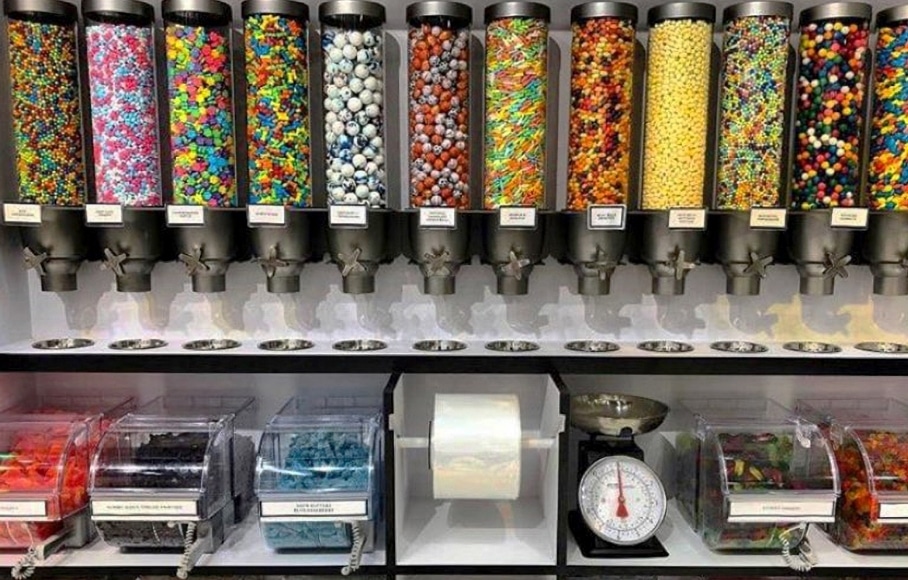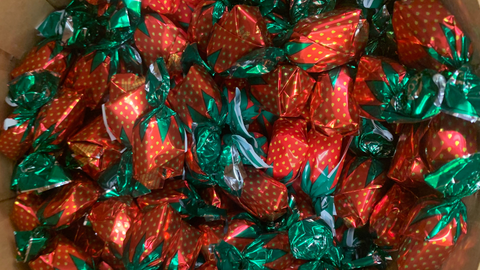8 Easy Facts About I Luv Candi Explained
Table of ContentsI Luv Candi Things To Know Before You Get ThisI Luv Candi Fundamentals ExplainedAn Unbiased View of I Luv CandiThe Ultimate Guide To I Luv CandiOur I Luv Candi Statements
You can additionally approximate your very own profits by using different presumptions with our monetary prepare for a candy store. Ordinary month-to-month earnings: $2,000 This kind of sweet-shop is commonly a little, family-run company, probably known to locals however not drawing in large numbers of tourists or passersby. The store could offer a choice of common candies and a couple of homemade deals with.
The store does not usually bring unusual or expensive products, focusing instead on budget friendly deals with in order to keep routine sales. Thinking an ordinary costs of $5 per client and around 400 clients each month, the month-to-month revenue for this sweet-shop would be approximately. Ordinary monthly revenue: $20,000 This sweet-shop gain from its critical area in a busy urban location, attracting a huge number of clients searching for wonderful extravagances as they go shopping.

In enhancement to its diverse sweet option, this store might additionally offer related items like gift baskets, sweet bouquets, and uniqueness products, offering numerous profits streams. The store's area needs a greater budget plan for rent and staffing yet results in greater sales volume. With an approximated typical investing of $10 per customer and concerning 2,000 clients per month, this store can produce.
I Luv Candi Can Be Fun For Everyone
Found in a significant city and traveler location, it's a large facility, often spread out over multiple floors and potentially component of a national or global chain. The shop offers an enormous range of sweets, consisting of exclusive and limited-edition items, and product like top quality clothing and devices. It's not simply a shop; it's a location.
The operational costs for this kind of store are substantial due to the location, dimension, team, and features provided. Assuming an ordinary acquisition of $20 per client and around 2,500 clients per month, this flagship shop might accomplish.
Classification Examples of Expenditures Typical Regular Monthly Cost (Range in $) Tips to Reduce Expenditures Lease and Utilities Store rental fee, power, water, gas $1,500 - $3,500 Think about a smaller location, bargain lease, and use energy-efficient lights and home appliances. Inventory Sweet, treats, packaging products $2,000 - $5,000 Optimize inventory monitoring to minimize waste and track popular things to prevent overstocking.
The smart Trick of I Luv Candi That Nobody is Talking About
Advertising And Marketing Printed products, on-line ads, promos $500 - $1,500 Concentrate on cost-efficient digital advertising and make use of social media platforms absolutely free promo. Insurance coverage Business responsibility insurance $100 - $300 Look around for competitive insurance coverage prices and think about bundling policies. Devices and Upkeep Cash money registers, display shelves, repair services $200 - $600 Buy previously owned equipment when feasible and perform regular maintenance to prolong devices life expectancy.

This suggests that the candy shop has actually gotten to a factor where it covers all its dealt with expenditures and starts producing earnings, we call it the breakeven point. Consider an example of a candy shop where the regular monthly fixed costs usually amount to approximately $10,000. A rough price quote for the breakeven point of a candy shop, would certainly after that be around (because it's the total fixed expense to cover), or selling in between with a rate series of $2 to $3.33 each.
I Luv Candi - Truths
A huge, well-located sweet-shop would clearly have a higher breakeven factor than a little shop that does not require much income to cover their expenditures. Curious about the productivity of your candy shop? Try our easy to use financial strategy crafted for sweet-shop. Merely input your own assumptions, and it will assist you calculate the amount you require to earn in order to run a profitable company - sunshine coast lolly shop.
Another threat is competition from other sweet-shop or larger merchants that might provide a bigger variety of products at lower rates (https://www.4shared.com/u/UqU86l4N/iluvcandiau.html). Seasonal variations in demand, like a decline in sales after holidays, can likewise impact productivity. Furthermore, transforming consumer choices for much healthier snacks or nutritional constraints can minimize the charm of standard sweets
Financial recessions that minimize customer spending can impact sweet shop sales and profitability, making it essential for candy shops to manage their expenses and adapt to altering market conditions to remain profitable. These dangers are frequently consisted of in the SWOT analysis for a sweet shop. Gross margins and net margins are key indicators used to evaluate the profitability of a sweet store company.
Excitement About I Luv Candi
Essentially, it's the earnings staying after deducting prices directly pertaining to the sweet stock, such as purchase prices from providers, manufacturing expenses (if the sweets are homemade), and personnel salaries for those associated with manufacturing or sales. https://harmless-title-b37.notion.site/I-Luv-Candi-Your-Sweet-Haven-in-the-Sunshine-Coast-f1d0dc94574e4d6da998d4174425baf6. Web margin, on the other hand, factors in all the expenses the sweet-shop incurs, including indirect prices like management costs, marketing, rent, and tax obligations
Candy shops typically have an ordinary gross margin.For instance, if your sweet store makes $15,000 per month, your gross earnings would be about 60% x $15,000 = $9,000. Consider a candy shop that sold 1,000 candy bars, with each bar valued at $2, making the total profits $2,000.